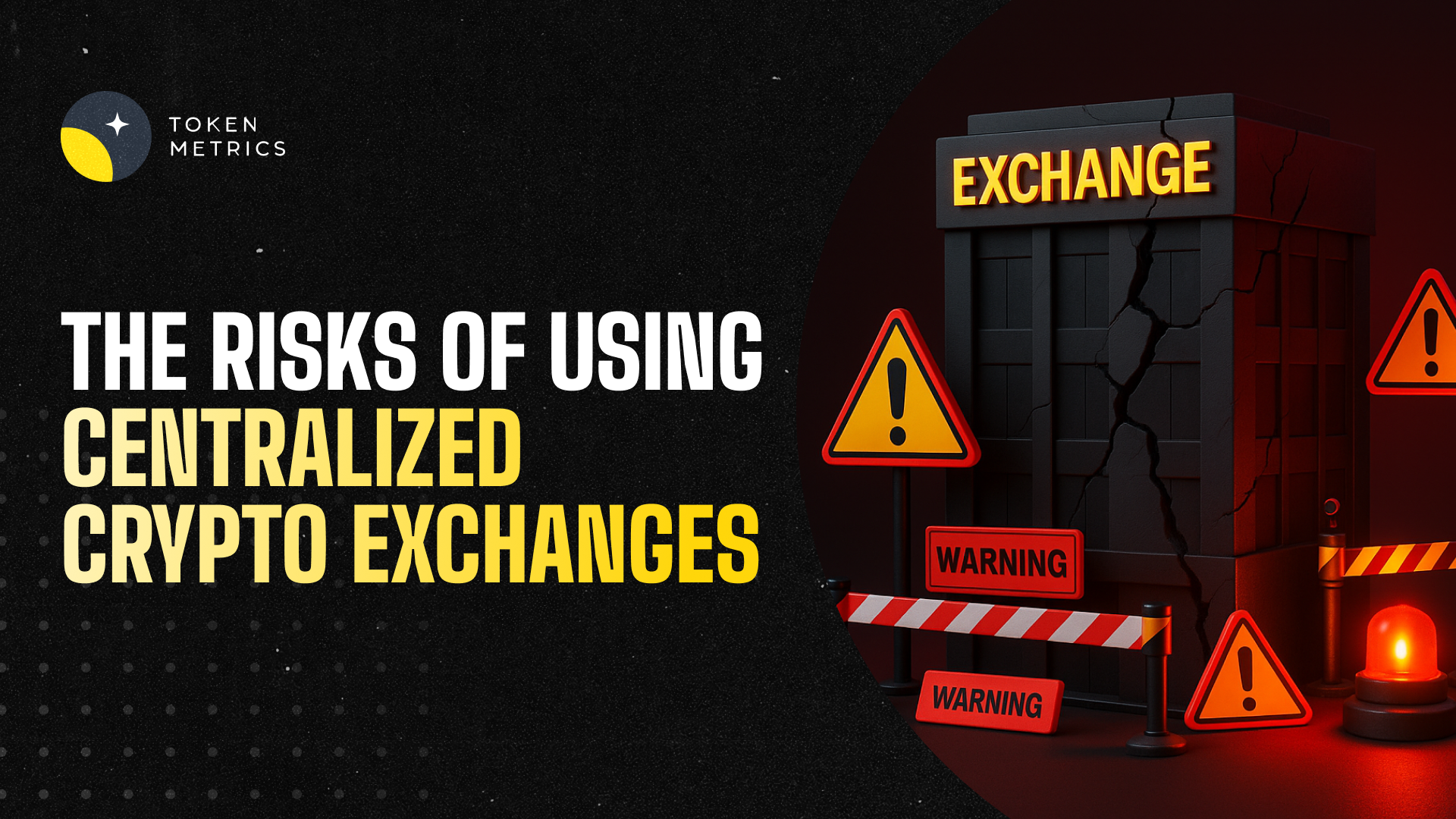
Support and Resistance API: Auto-Calculate Smart Levels for Better Trades

Most traders still draw lines by hand in TradingView. The support and resistance API from Token Metrics auto-calculates clean support and resistance levels from one request, so your dashboard, bot, or alerts can react instantly. In minutes, you’ll call /v2/resistance-support, render actionable levels for any token, and wire them into stops, targets, or notifications. Start by grabbing your key on Get API Key, then Run Hello-TM and Clone a Template to ship a production-ready feature fast.
What You’ll Build in 2 Minutes
A minimal script that fetches Support/Resistance via /v2/resistance-support for a symbol (e.g., BTC, SOL).
- A one-liner curl to smoke-test your key.
- A UI pattern to display nearest support, nearest resistance, level strength, and last updated time.
Next Endpoints to add
- /v2/trading-signals (entries/exits)
- /v2/hourly-trading-signals (intraday updates)
- /v2/tm-grade (single-score context)
- /v2/quantmetrics (risk/return framing)
Why This Matters
Precision beats guesswork. Hand-drawn lines are subjective and slow. The support and resistance API standardizes levels across assets and timeframes, enabling deterministic stops and take-profits your users (and bots) can trust.
Production-ready by design. A simple REST shape, predictable latency, and clear semantics let you add levels to token pages, automate SL/TP alerts, and build rule-based execution with minimal glue code.
Where to Find
Need the Support and Resistance data? The cURL request for it is in the top right of the API Reference for quick access.
👉 Keep momentum: Get API Key • Run Hello-TM • Clone a Template
How It Works (Under the Hood)
The Support/Resistance endpoint analyzes recent price structure to produce discrete levels above and below current price, along with strength indicators you can use for priority and styling. Query /v2/resistance-support?symbol=<ASSET>&timeframe=<HORIZON> to receive arrays of level objects and timestamps.
Polling vs webhooks. For dashboards, short-TTL caching and batched fetches keep pages snappy. For bots and alerts, use queued jobs or webhooks (where applicable) to avoid noisy, bursty polling—especially around market opens and major events.
Production Checklist
- Rate limits: Respect plan caps; add client-side throttling.
- Retries/backoff: Exponential backoff with jitter for 429/5xx; log failures.
- Idempotency: Make alerting and order logic idempotent to prevent duplicates.
- Caching: Memory/Redis/KV with short TTLs; pre-warm top symbols.
- Batching: Fetch multiple assets per cycle; parallelize within rate limits.
- Threshold logic: Add %-of-price buffers (e.g., alert at 0.3–0.5% from level).
- Error catalog: Map common 4xx/5xx to actionable user guidance; keep request IDs.
- Observability: Track p95/p99; measure alert precision (touch vs approach).
- Security: Store API keys in a secrets manager; rotate regularly.
Use Cases & Patterns
- Bot Builder (Headless): Use nearest support for stop placement and nearest resistance for profit targets. Combine with /v2/trading-signals for entries/exits and size via Quantmetrics (volatility, drawdown).
- Dashboard Builder (Product): Add a Levels widget to token pages; badge strength (e.g., High/Med/Low) and show last touch time. Color the price region (below support, between levels, above resistance) for instant context.
- Screener Maker (Lightweight Tools): “Close to level” sort: highlight tokens within X% of a strong level. Toggle alerts for approach vs breakout events.
- Risk Management: Create policy rules like “no new long if price is within 0.2% of strong resistance.” Export daily level snapshots for audit/compliance.
Next Steps
- Get API Key — generate a key and start free.
- Run Hello-TM — verify your first successful call.
- Clone a Template — deploy a levels panel or alerts bot today.
- Watch the demo: Compare plans: Scale confidently with API plans.
FAQs
1) What does the Support & Resistance API return?
A JSON payload with arrays of support and resistance levels for a symbol (and optional timeframe), each with a price and strength indicator, plus an update timestamp.
2) How timely are the levels? What are the latency/SLOs?
The endpoint targets predictable latency suitable for dashboards and alerts. Use short-TTL caching for UIs, and queued jobs or webhooks for alerting to smooth traffic.
3) How do I trigger alerts or trades from levels?
Common patterns: alert when price is within X% of a level, touches a level, or breaks beyond with confirmation. Always make downstream actions idempotent and respect rate limits.
4) Can I combine levels with other endpoints?
Yes—pair with /v2/trading-signals for timing, /v2/tm-grade for quality context, and /v2/quantmetrics for risk sizing. This yields a complete decide-plan-execute loop.
5) Which timeframe should I use?
Intraday bots prefer shorter horizons; swing/position dashboards use daily or higher-timeframe levels. Offer a timeframe toggle and cache results per setting.
6) Do you provide SDKs or examples?
Use the REST snippets above (JS/Python). The docs include quickstarts, Postman collections, and templates—start with Run Hello-TM.
7) Pricing, limits, and enterprise SLAs?
Begin free and scale as you grow. See API plans for rate limits and enterprise SLA options.
Disclaimer
This content is for educational purposes only and does not constitute financial advice. Always conduct your own research before making any trading decisions.

.svg)

Create Your Free Token Metrics Account

.png)




%201.svg)
%201.svg)


%201.svg)









.svg)




.png)